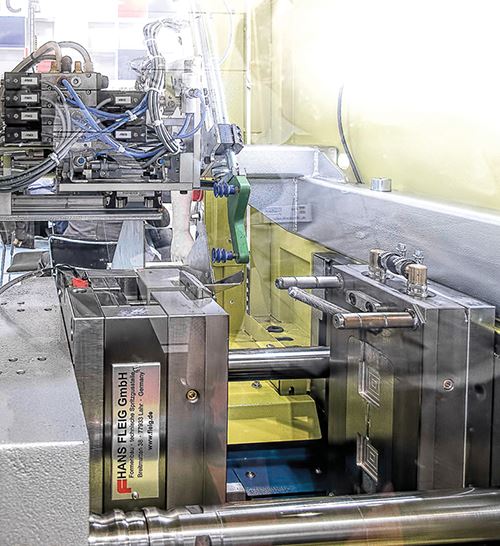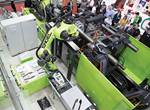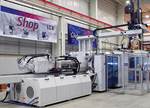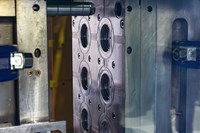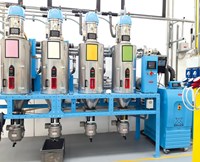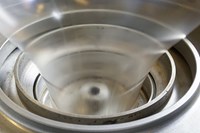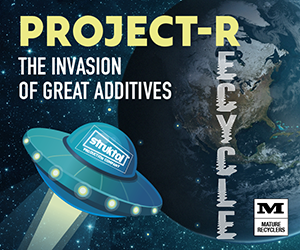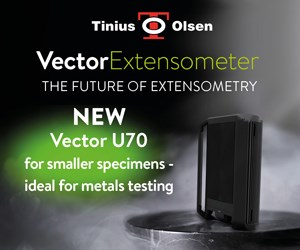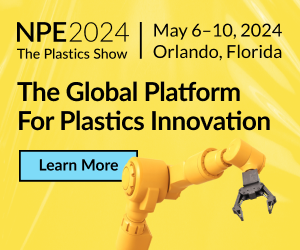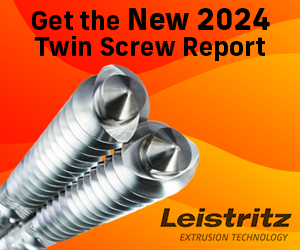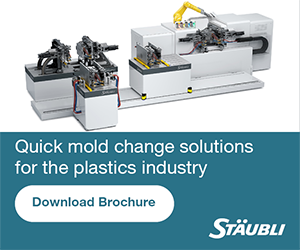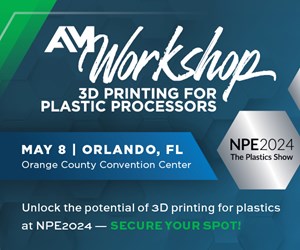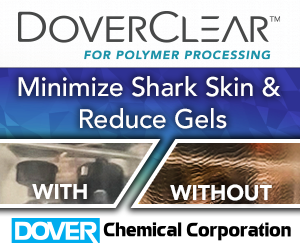3D Printing’s Growing Presence Seen at Fakuma Show
Additive manufacturing appeared in tooling inserts, robot grippers, and molded parts.
Additive manufacturing, or 3D printing, appeared in various guises throughout October’s Fakuma 2015 show in Friedrichshafen, Germany. Arburg (U.S. office in Rocky Hill, Conn.) brought three of its Freeformer machines, the first to use standard molding pellets, to Fakuma. Two of them formed part of “Industry 4.0” exhibits of “personalized manufacturing” in which the Freeformers applied individualized decoration to injection molded parts. One new wrinkle was an automated cell in which a Freeformer was tended by a Kuka robot instead of a human operator (see this month's Fakuma Close Up).
Arburg officials noted in a Q&A session with the press that its 3-axis Freeformer model is meeting current demands of the market and there is little push from customers so far to commercialize a more expensive 5-axis version. More immediate development priorities, the officials said, were nitrided components to resist wear, a larger build envelope, and printing of high-temperature resins.
While Arburg is the first plastics machinery company to offer its own 3D printer, Boy Machines (U.S. office in Exton, Pa.) announced at the show that it is offering a turnkey package with a Stratasys 3D printer for making plastic cavity inserts. Such tool inserts (which also appeared at multiple exhibits at NPE2015 in Orlando) are typically made of ABS and are said to last for up to 500 shots. Because there is no internal cooling for the inserts, Boy blew cold air over the mold face between cycles.
3D-printed ABS mold inserts were also shown at Fakuma by Hasco (U.S. office in Fletcher, N.C.) as prototyping accessories for its quick-change mold bases.
Boy Machines showed another application of 3D printing in end-of-arm tooling for a sprue picker (pictured here). KraussMaffei (U.S. office in Florence, Ky.) also showed 3D-printed EOAT on articulated six-axis and Cartesian three-axis robots, as well as a servo sprue picker, in three molding cells. KM noted that 3D printing allows the customer to make its own EOAT, to make it fast and lightweight and with optimized conformity to the shape of the part to be handled. (For more on 3D-printed EOAT, see Aug. ’14 Close Up.)
Related Content
-
Cobot Creates 'Cell Manufacturing Dream' for Thermoformer
Kal Plastics deploys Universal Robot trimming cobot for a fraction of the cost and lead time of a CNC machine, cuts trimming time nearly in half and reduces late shipments to under 1% — all while improving employee safety and growth opportunities.
-
Drones and Injection Molding Ready for Takeoff
Drones and unmanned aerial vehicles (UAV) are approaching an inflection point where their production volumes — and functionality — will increasingly point to injection molding.
-
Automation Evolution: From Robots to Work Cells, Solo Devices to Integrated Systems
Injection molding automation has progressed from devices to systems, from simplicity to more complex capabilities. The author traces this development through various levels of automation – all still available choices today – and analyzes the costs and capabilities for each level.

